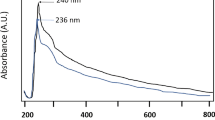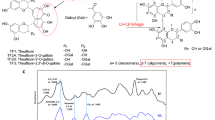Abstract
The use of collagen is the recent development in various medical fields. Huge quantities of hide and skin trimmings are generated during the leather processing are wasted or underutilized. Trimmings contain collagen which can be beneficially extracted and utilized for high value products. Poly methyl methacrylate based denture materials exhibit serious concerns such as high porosity, presence of residual monomer, shrinkage, distortion and high rate of deterioration of the materials. This study aims to incorporate extracted Type I collagen with polymer to obtain denture base and investigate its chemical and mechanical properties. The present research methodology also reduces the quantity of monomer and acrylic resin usage. The collagen was extracted from animal skin and hide trimmings which are otherwise disposed as wastes. This study investigated the effect of visco-elastic characteristics of resulted specimens and their transition temperature, mechanical properties, decomposition temperature and leachability. The collagen-based specimens have better tensile strength with high decomposition temperature compared to control specimens. Scanning Electron Microscopy analysis revealed that the experimental specimens was cohesive and homogeneous which explained the higher tensile and decomposition values. The study suggests that collagen cross-linked acrylic denture base exhibit better mechanical and thermal resistance properties when compared to control specimens. The study indicates that biomaterials are emerging as smart products of value in human health.









Similar content being viewed by others
References
Ferracane JL. Current trends in dental composites. Crit Rev Oral Biol Med. 1995;6:302–18.
Khindria SK, Mittal S, Sukhija U. Evolution of denture base materials. J Indian Prosth Soc. 2009;9:64–9.
Braden M. Some aspects of the chemistry and physics of dental resins. Adv Dent Res. 1988;2:93–7.
Darbar UR, Huggett R, Harrison A. Denture fracture—a survey. Br Dent J. 1994;176:342–5.
Ekfeldt A, Oilo G. Wear of prosthodontic materials—an in vivo study. J Oral Rehabil. 1990;17:117–29.
Jörgensen EB. Effects of denture-wearing habits on periodontal health of abutment teeth in patients with overdentures. J Clin Periodontol. 1994;21:265–9.
Aboushelib MN, Matinlinna JP, Salameh Z, Ounsi H. Innovations in bonding to zirconia-based materials: part I. Dent Mater. 2008;24:1268–72.
Goldberg AJ, Burstone CJ. The use of continuous fiber reinforcement in dentistry. Dent Mater. 1992;8:197–202.
Holand W, Rheinberger V, Apel E, Hoen CV, Holand M, Dommann A, Obrecht M, Mauth C, Hausner UR. Clinical applications of glass—ceramics in dentistry. J Mater Sci Mater Med. 2006;17:1037–42.
Beyli MS, Dent M, Fraunhofer JAV. An analysis of causes of fracture of acrylic resin dentures. J Prosthet Dent. 1981;46:238–41.
Drummond JL. Degradation, fatigue and failure of resin dental composite materials. J Dent Res. 2008;87:710–9.
Blagojevic V, Murphy VM. Microwave polymerization of denture base materials. J Oral Rehabil. 1999;26:804–8.
Dagar SR, Pakhan AJ, Thombare RU, Motwani BK. The evaluation of flexural strength and impact strength of heat-polymerized polymethyl methacrylate denture base resin reinforced with glass and nylon fibers: an in vitro study. J Indian Prosth Soc. 2008;8:98–104.
Umemoto K, Kurata S. Basic study of a new denture base resin applying hydrophobic methacrylate monomer. Dent Mat J. 1997;16:21–30.
Geurtsen W. Toxicology of dental materials and clinical experience. J Dent Res. 2003;82:500.
Gopferich A. Mechanisms of polymer degradation and erosion. Biomaterials. 1996;17:103–14.
Jorge JH, Giampaolo ET, Machado AL, Vergani CE. Cytotoxicity of denture base acrylic resins: a literature review. J Prosthet Dent. 2003;90:190–3.
Stanford JW. Future of materials and materials research. Adv Dent Res. 1988;2:187–92.
Davy KWM, Causton BE. Radio-opaque denture base: a new acrylic co-polymer. J Dent. 1982;10:54–64.
Garcia DA, Sullivan TM, O’Neill DM. Materials science: the biocompatibility of dental implant materials measured in an animal model. J Dent Res. 1981;60:44–9.
Schmalz G. Concepts in biocompatibility testing of dental restorative materials. Clin Oral Invest. 1997;1:154–62.
Lee CH, Singla A, Lee Y. Biomedical applications of collagen. Intl J Pharma. 2001;221:1–22.
Giusti P, Lazzeri L, Petris SD, Palla M, Cascone MG. Cascone, collagen based new bioartificial polymeric materials. Biomaterials. 1994;15:1229–33.
Bowes JH, Cater CW. Cross linking of collagen. J Appl Chem. 1988;15:296–304.
Nimni ME, Cheung D, Strates B, Kodama M, Sheikh K. Chemically modified collagen: a natural biomaterial for tissue replacement. J Biomed Mater Res Part A. 1987;21:741–71.
Usha R, Ramasami T. Role of solvents in stability of collagen. J Therm Anal Cal. 2008;93:541–5.
Grzybowski J, Kolodziej W, Trafny E, Struzyna J. A new anti-infective collagen dressing containing antibiotics. J Biomed Mat Res Part A. 1997;36:163–6.
Knott L, Tarlton J, Bailey A. Chemistry of collagen cross-linking: biochemical changes in collagen during the partial mineralization of turkey leg tendon. Biochem J. 1997;322:535–42.
Brodsky B, Ramshaw J. The collagen triple-helix structure. Matrix Biol. 1997;15:545–54.
Miller E, Rhodes R. Preparation and characterization of the different types of collagen. Methods Enzymol. 1982;82:33–64.
Brown EM. Collagen—A natural scaffold for biology and engineering. J Am Leather Chem Assoc. 2009;104:275–85.
Stenzel KH, Miyata T, Rubin AL. Collagen as a biomaterial. Ann Rev Biophys Bioeng. 1974;3:231–53.
Wissink MJB, Beernink R, Pieper JS, Poot AA, Engbers GHM, Beugeling T, Aken WGV, Feijen J. Immobilization of heparin to EDC/NHS-crosslinked collagen. Characterization and in vitro evaluation Biomaterials. 2001;22:151–63.
Kamble VD, Parkhedkar RD, Mowade TK. The effect of different fiber reinforcements on flexural strength of provisional restorative resins: an in-vitro study. J Adv Prosthodont. 2012;4:1–6.
Kawaguchi T, Lassila LVJ, Vallittu PK, Takahashi Y. Mechanical properties of denture base resin cross-linked with methacrylated dendrimer. Dent Mater. 2011;27:755–61.
Bertolini MM, Portela MB, Curvelo JAR, Soares RMA, Lourenço EJV, Telles DM. Resins-based denture soft lining materials modified by chlorhexidine salt incorporation: an in vitro analysis of antifungal activity, drug release and hardness. Dent Mater. 2014;30:793–8.
Abdul SK, Hina K, Zenab S, Maria K, Jibran I, Nawshad M, Muhammad AF, Ihtesham UR. Vibrational spectroscopy of selective dental restorative materials. Appl Spectrosc Rev. 2017;52:507–40.
Newmann R, Logan MA. Determination of collagen in tissue. J Biol Chem. 1980;184:549–56.
International Standards Organization. ISO 1567 for denture base polymers, 2nd Ed. Geneva. 1998.
Alexandrescu L, Albu L, Vilsan M, Georgescu M, Moldovan Z, Florescu MS, Profiroiu MC. Advanced composite materials obtained by processing chemically treated protein wastes—New ecological methods for depollution. Leather Footwear J. 2010;9:266–73.
Madhan B, Muralidharan C, Jayakumar R. Study on the stabilization of collagen with vegetable tannins in the presence of acrylic polymer. Biomaterials. 2001;23:2841–7.
Narva KK, Lassila LV, Vallittu PK. The static strength and modulus of fiber reinforced denture base polymer. Dent Mater. 2005;21:421–8.
Xu J, Li Y, Yu T, Cong L. Reinforcement of denture base resin with short vegetable fiber. Dent Mater. 2013;29:1273–9.
Sionkowska A, Wisniewska JS, Wisniewski M. Collagen-synthetic polymer interactions in solution and in thin films. J Mole Liq. 2009;145:135–8.
Erbulak Z, Ergun G. The effects of different surface treatments applied to milled PMMA denture base material on repair bond strength. Odontology. 2023. https://doi.org/10.1007/s10266-023-00806-z.
Author information
Authors and Affiliations
Corresponding author
Ethics declarations
Conflict of interest
Not applicable.
Additional information
Publisher's Note
Springer Nature remains neutral with regard to jurisdictional claims in published maps and institutional affiliations.
Rights and permissions
Springer Nature or its licensor (e.g. a society or other partner) holds exclusive rights to this article under a publishing agreement with the author(s) or other rightsholder(s); author self-archiving of the accepted manuscript version of this article is solely governed by the terms of such publishing agreement and applicable law.
About this article
Cite this article
Sundar, V.J. Novel biocompatible denture material incorporating type I collagen with improved functional properties for oral health. Odontology 112, 472–478 (2024). https://doi.org/10.1007/s10266-023-00866-1
Received:
Accepted:
Published:
Issue Date:
DOI: https://doi.org/10.1007/s10266-023-00866-1




